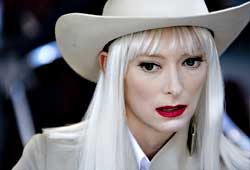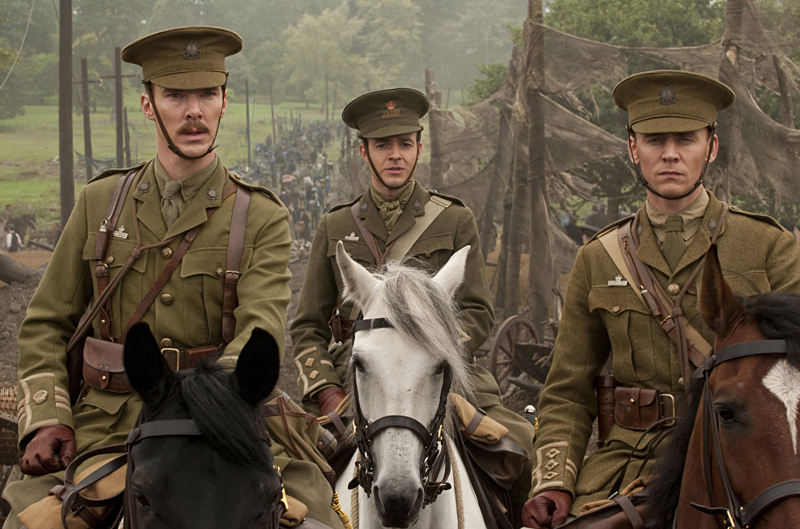Jim Jarmusch’s anonymous antihero hit man (French-Ivorian actor Isaach De Bankolé), identified in the final credits as the Lone Man, exists only in terms of his unspecified mission. He’s introduced in an overhead shot doing tai chi in an airport toilet stall, then taking a meeting in the first-class lounge. A few inexplicable aphorisms later, he’s traveling through Spain by train, grooving on a landscape shot by Christopher Doyle and soundwashed in hyperdrone acid jazz. Like everything Jarmusch, The Limits of Control is calibrated for cool: The Lone Man is a creature of habit, defined by his idiosyncrasies (insisting on two espressos in separate cups) and his reserved response to invariably eccentric contacts. All this killer need do is show up and acknowledge the password to receive a coded message and set off his contact’s solo riff. De Bankolé’s voluble co-stars include Tilda Swinton (in blonde wig and matching Stetson), John Hurt (babbling about Bohemia), and Bill Murray (identified as “The American” and channeling Donald Rumsfeld). Limits is a shaggy-dog story, but it’s leaner and less precious than the past few Jarmusch films. The Lone Man traverses the barren landscapes of an abstract thriller, engaging in mysterious transactions, trafficking in the free-floating symbols of a surrealist poem. Tracked by (or following) the same black helicopter from city to city, chased by kids who ask if he’s an American gangster, he lives in a world of allegory and myth.
The Limits of Control: More Low-Key Shenanigans From Jim Jarmusch.








